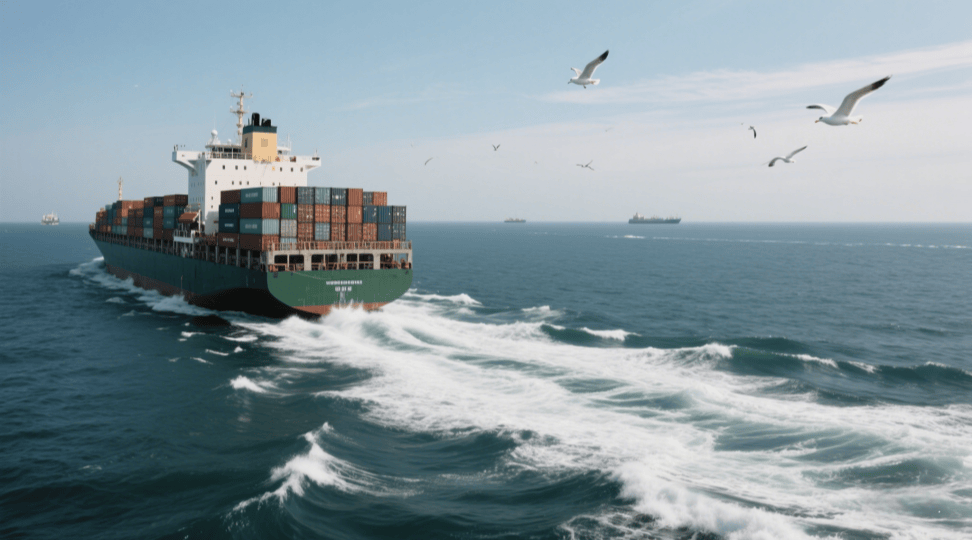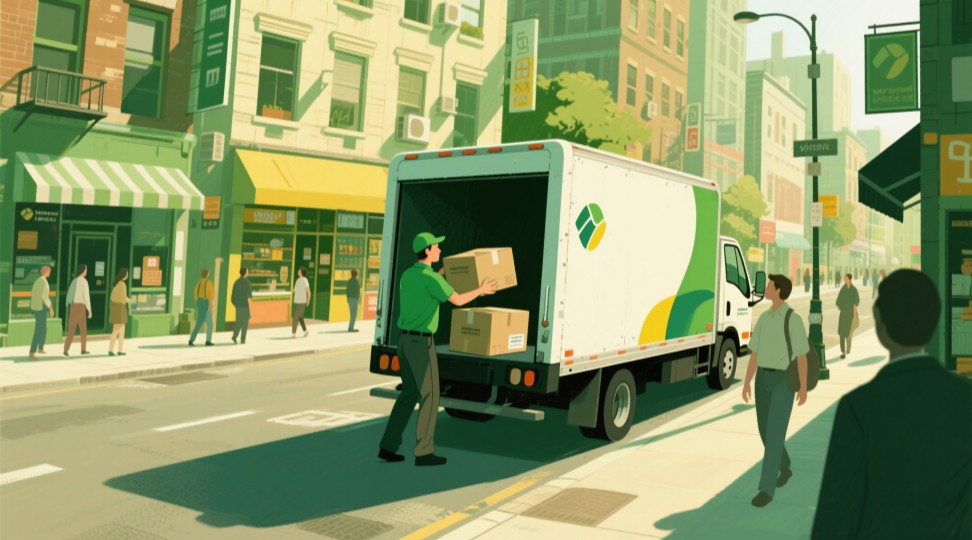Was ist Gütertransport?
Gütertransport bezeichnet den Transport von Gütern – von Rohstoffen und Industrieteilen bis hin zu Fertigprodukten – zwischen verschiedenen Standorten per Lkw, Bahn, Schiff oder Flugzeug. Er bildet das Rückgrat des globalen Handels, indem er Fabriken, Lagerhäuser, Häfen und Geschäfte miteinander verbindet und sicherstellt, dass Produkte pünktlich dort ankommen, wo sie benötigt werden. Moderner Gütertransport nutzt häufig standardisierte Container, die auf einen Lkw verladen, auf den Zug umgeladen, über Ozeane transportiert und per Flugzeug transportiert werden können, ohne dass die Ladung jemals ausgepackt werden muss. Das beschleunigt die Lieferung, senkt die Bearbeitungskosten und sorgt für die Sicherheit der Waren. Mit dem Wachstum des E-Commerce und dem zunehmenden grenzüberschreitenden Handel werden effizienter Gütertransport und intermodale Logistik für reibungslose Lieferketten immer wichtiger.

Welche Containertypen werden im Güterverkehr verwendet?
Effizienter Gütertransport beginnt mit der Wahl des richtigen Containers – vergleichbar mit der Wahl der perfekten Reisetasche für Ihr Gepäck. Die richtige Passform schützt Ihre Waren, beschleunigt das Be- und Entladen und hilft Ihnen, Überraschungen auf der Straße (oder auf der Schiene, zu Wasser oder in der Luft) zu vermeiden. Hier ist ein kurzer Überblick über die wichtigsten Containertypen in der heutigen Logistik:

-
Standard-Trockencontainer
Das Arbeitstier für den täglichen Gütertransport. Vollständig versiegelt und wetterfest – perfekt für Elektronik, Kleidung, Werkzeuge und alles, was eine trockene, sichere Fahrt benötigt.
-
High Cube Container
Dieser Behälter ist fast einen Fuß höher als die Standardbox und bietet Ihnen zusätzlichen Platz für sperrige, aber leichte Gegenstände – denken Sie an gestapelte Kartons, Möbel oder große Verpackungen – ohne dass die Waage ins Wanken gerät.
-
Kühlcontainer (Reefer)
Die integrierte Kühlung hält die Temperaturen von –30 °C bis +30 °C konstant. Kühlcontainer sind ein Muss für frische Produkte, Tiefkühlkost und Medikamente, die auf langen Transporten keinen Temperaturanstieg vertragen.
-
Open‑Top‑Container
Wenn Türen nicht ausreichen, entfernen Sie das Dach und laden Sie übergroße Fracht – schwere Maschinen, Baumaterialien – mit einem Kran direkt von oben hinein und decken Sie sie anschließend mit einer strapazierfähigen Plane ab.
-
Flat‑Rack‑Container
Da es keine Seitenwände oder herunterklappbaren Enden gibt, können Sie ungewöhnlich geformte, breite oder besonders hohe Gegenstände wie Fahrzeuge, Rohre und Industrieausrüstung einladen, ohne sie hineinzuquetschen.
-
Tankcontainer
In einem Standardrahmen befindet sich ein Edelstahltank für Flüssigkeiten und Gase – alles von Wein und Speiseöl bis hin zu Chemikalien und Kraftstoffen – und ist dicht verschlossen, um Lecks zu verhindern.
Die Wahl des richtigen Containertyps ist ein kleiner Schritt, der sich auszahlt: reibungslosere Abwicklung, weniger Verzögerungen und geringere Kosten. Planen Sie das nächste Mal einen Transport, wählen Sie den passenden Container für Ihre Fracht – und Ihr Gütertransport läuft wie am Schnürchen.
Wichtige Güterverkehrsträger
Effizienter Gütertransport beginnt mit der Wahl des richtigen Transportmittels für Ihre Fracht und Route. Hier finden Sie einen Überblick über die vier wichtigsten Optionen, damit Sie intelligentere und kostengünstigere Entscheidungen treffen können:
-
Straßenfracht
Dank Tür-zu-Tür-Service und Routenflexibilität dominieren Lkw den Kurz- und Mittelstreckenverkehr.
-
Trockentransporter für alltägliche, haltbare Waren
-
Reefer (Kühl-LKW) für temperaturempfindliche Güter
-
Pritschenwagen für übergroße oder schwere Maschinen
-
Wechselbrücken-LKW für den schnellen Containerumschlag zwischen Straße und Schiene
Der Straßengüterverkehr glänzt auf der letzten Meile und in regionalen Netzwerken, allerdings müssen Sie Schwankungen der Kraftstoffpreise und Emissionsvorschriften berücksichtigen, um die Budgets im Rahmen zu halten.
-
Schienengüterverkehr
Ideal für Massentransporte über große Entfernungen. Züge transportieren große Mengen kostengünstiger und reduzieren die CO₂-Emissionen im Vergleich zum Lkw um bis zu 75 % pro Tonnenmeile. Der China-Europa-Bahnkorridor beispielsweise verkürzt die Transitzeiten im Vergleich zum Seetransport um rund 30 %.
-
Luftfracht
Der schnellste Weg, hochwertige oder dringende Güter zu transportieren. Der Lufttransport macht weniger als 1 % des Volumens aus, aber dank seiner Geschwindigkeit rund 35 % des Handelswerts. Behalten Sie jedoch die Treibstoffkosten und saisonale Kapazitätsgrenzen im Auge.
-
Seefracht
Die erste Wahl für den internationalen Containertransport. Über 90 % des weltweiten Handelsvolumens werden zu niedrigsten Stückkosten abgewickelt. Der Service ist zuverlässig für sperrige und schwere Güter, allerdings können Hafenüberlastungen und Verzögerungen beim Zoll zu Verzögerungen führen.

Durch die Wahl zwischen Straßen-, Schienen-, Luft- und Seetransport – oder deren Kombination in intermodalen Lösungen – können Sie Geschwindigkeit, Kosten und Frachtsorgfalt in Einklang bringen. Passen Sie jede Sendung an den optimalen Transportweg an, damit Ihr Gütertransport von Anfang bis Ende reibungslos verläuft.
Straßengüterfahrzeuge: Ein genauerer Blick
Die Wahl des richtigen Fahrzeugtyps ist für die Optimierung des Straßentransports entscheidend. Hier sind die wichtigsten Optionen:
TIR-LKW: Ausgestattet mit sicheren, zollversiegelten Containern für grenzüberschreitende Effizienz.
Transportfahrzeuge: Spezialisiert auf Kurzstreckentransporte zwischen Häfen, Lagerhäusern und Bahnterminals.
Schwerlast-LKW: Für Langstrecken konzipiert, oft mit integrierter GPS-Verfolgung für Echtzeit-Sichtbarkeit.
Für Unternehmen, die Wert auf Flexibilität legen, kann der intermodale Lkw-Verkehr – eine Kombination aus Straße und Schiene – die Kosten um 10–15 % senken und gleichzeitig die Lieferzeiten einhalten.
Luft, Straße oder See: Welcher Transportweg ist der beste?
Die optimale Wahl hängt von drei Faktoren ab: Kosten, Geschwindigkeit und Frachtart.
| Modus | Kosten | Geschwindigkeit | Am besten für |
|---|
| Seefracht | Niedrig | Langsam | Schüttgut, haltbare Waren |
| Luftfracht | Hoch | Schnell | Elektronik, Pharma |
| Straßenfracht | Mäßig | Mäßig | Regionale Verteilung, LTL-Sendungen |
| Schienengüterverkehr | Niedrig | Mäßig | Kontinentübergreifende Massenguttransporte |
Beispielsweise könnte ein Hersteller, der Autoteile von China nach Europa versendet, den Schienen- und Straßentransport über das chinesisch-europäische Schienennetz kombinieren, um Kosten und Geschwindigkeit in Einklang zu bringen.

Planung Ihres Gütertransports: 5 wichtige Überlegungen
1. Kosten vs. Geschwindigkeit
Kompromisse bewertenLuftfracht kostet vier- bis fünfmal mehr als Seefracht, gewährleistet aber eine schnellere Lieferung. Nutzen Sie Tools wie Frachtkostenanalysemodelle, um Szenarien zu simulieren und Einsparungen zu ermitteln.
2. Frachtspezifikationen
Gewicht und Volumen: Schwere Maschinen eignen sich für den Schienen- oder Seetransport, während kleine Pakete vom Luft- oder Straßentransport profitieren.
Verderblichkeit: Für Lebensmittel oder Arzneimittel können Kühllastwagen oder Lufttransporte erforderlich sein.
3. Einhaltung gesetzlicher Vorschriften
Bleiben Sie über Zölle, Zollbestimmungen und Nachhaltigkeitsauflagen auf dem Laufenden. Beispielsweise werden die Clean Truck-Vorschriften der EPA aus dem Jahr 2027 Auswirkungen auf Flottenmodernisierungen haben.
4. Routenoptimierung
Nutzen Sie intermodale Logistik, um überlastete Häfen oder Autobahnen zu umgehen. Plattformen wie Lieber Eisenbahnverkehr bieten Echtzeit-Tracking und Routenanpassungen, um Verzögerungen zu vermeiden.
5. Risikomanagement
Investieren Sie in eine Frachtversicherung und diversifizieren Sie Ihre Transportpartner, um Störungen wie Kraftstoffpreisspitzen oder Kapazitätsengpässe zu bewältigen.
Abschluss
Effektiver Gütertransport erfordert eine strategische Kombination aus Transportmitteln, Technologien und Partnerschaften. Ob TIR-LKW, China-Europa-Bahn oder Luftfracht – die Kenntnis Ihrer Optionen gewährleistet Kosteneffizienz und Zuverlässigkeit.
Bei Lieber EisenbahnverkehrWir bieten maßgeschneiderte Lösungen für Straßen-, Schienen- und intermodale Logistik. Wir unterstützen Sie bei der Bewältigung der Komplexität des globalen Güterverkehrs – kontaktieren Sie unser Team noch heute, um Ihre Lieferkette zu optimieren.


















 IPv6 NETZWERK UNTERSTÜTZT
IPv6 NETZWERK UNTERSTÜTZT
